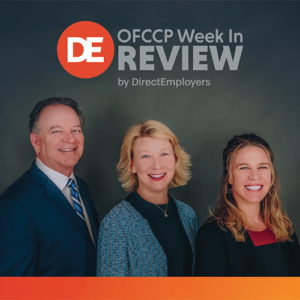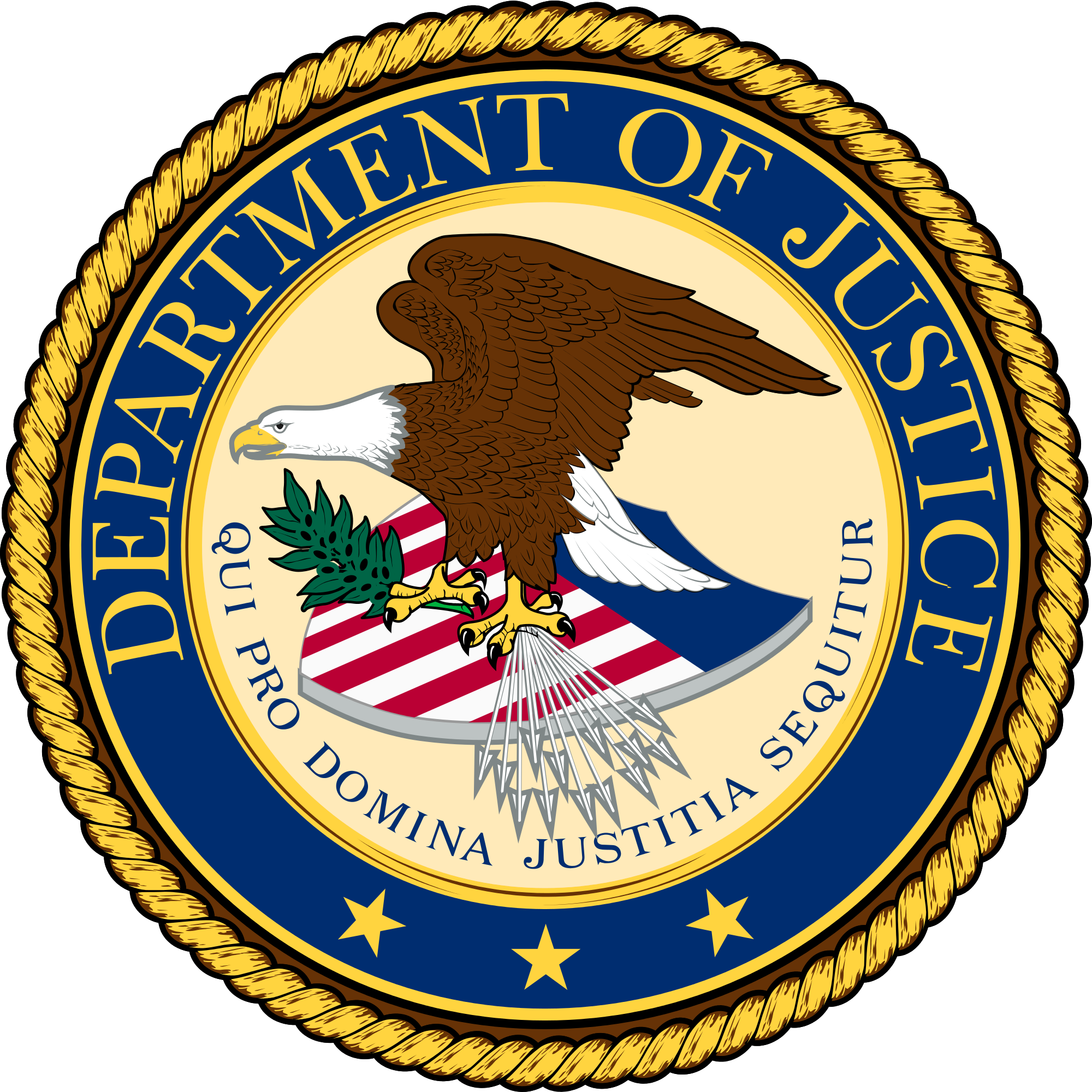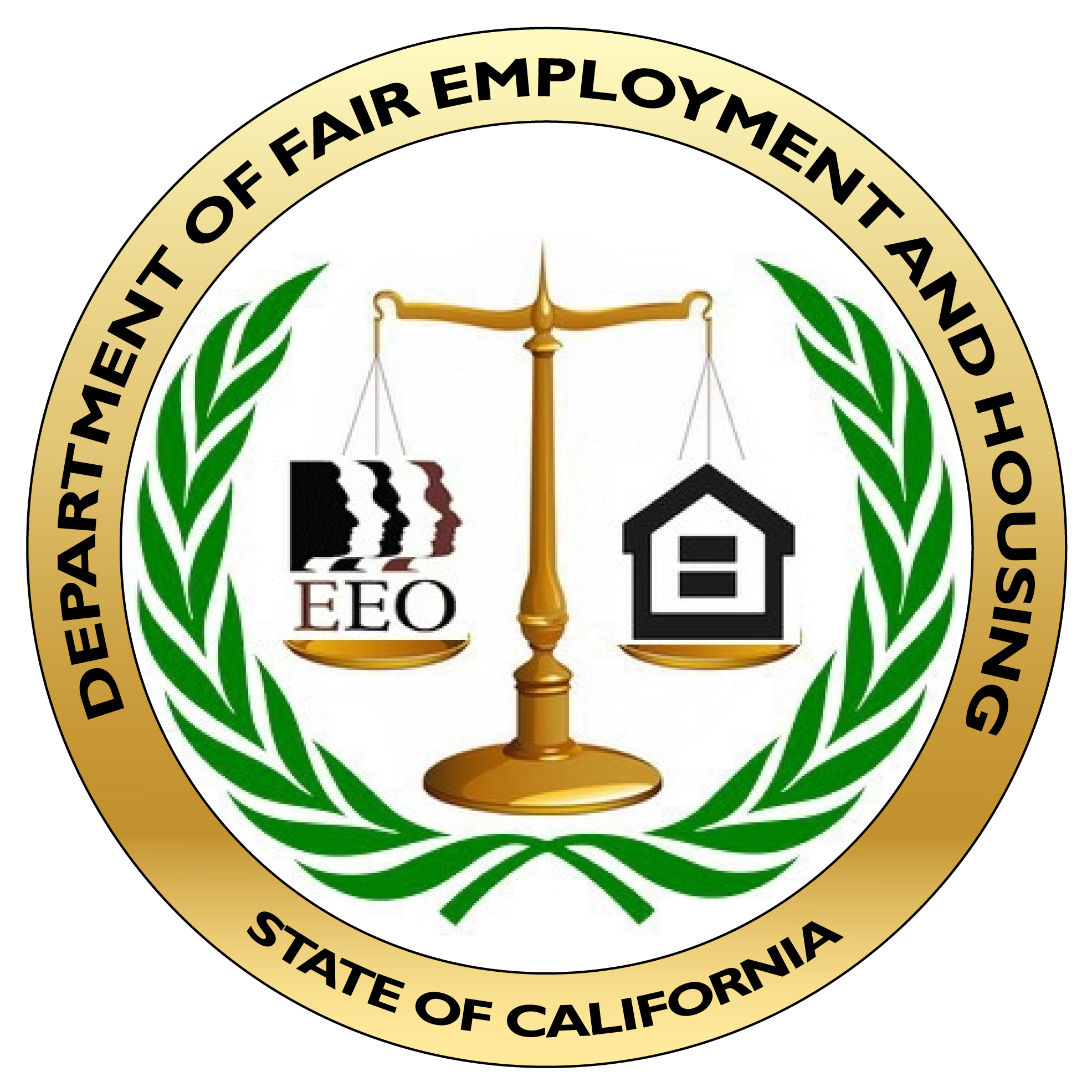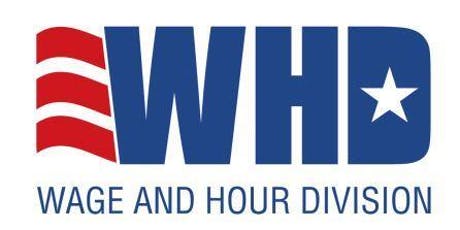
- EEOC Mediation Pilot Program Extended
- USDOJ Pursues Last-Minute Attempt to Kill “Adverse Impact” Discrimination Claims Against Federal Grant Recipients
- USDOL’s New Independent Contractor Final Rule is DOA, Or Is It? Not So Fast!
- Comment on EEOC’s Wellness Program Incentive Proposal
- HIRE Vets Award Officially Open for Registration
- E-Verify Back-Up – Get Compliant by January 11, 2021
- EEOC Shuts Down Democrat Commissioners’ Objections to More Transparent Commission Conciliation Negotiations with Respondent Employers
- New Resources in the Telework & Accessibility Toolkit
- New FAQs on CA Pay Data Reporting Act
- WHD Issued First Two Opinion Letters of 2021
- What Exactly is “Systemic Enforcement” at the EEOC?
- Employment Numbers Take a Hit as Dining Occupancy Allowance Drops
- Biden announced Boston Mayor Marty Walsh as Labor Secretary Nominee
- EEOC To Hold Two Public Meetings This Week
Wednesday, January 6, 2021: EEOC Mediation Pilot Program Extended

“The ACT Mediation Pilot has created more opportunities to resolve charges throughout an investigation, enhancing EEOC’s already successful mediation program,” said EEOC Chair Janet Dhillon. “Feedback indicates that the pilot has been well-received; however, we need more time to fine-tune its implementation and assess its impact.”
Announced in July of 2020, the Mediation Pilot Program expanded the categories of charges eligible for mediation and, generally, allows for mediation throughout an investigation. The Pilot also expanded the use of technology to hold virtual mediations.
The Numbers
Since its inception in 1999, the Agency has conducted more than 240,000 mediations, resolving over 170,000 charges and obtaining over $3 billion in benefits for aggrieved individuals.
Wednesday, January 6, 2021: USDOJ Pursues Last-Minute Attempt to Kill “Adverse Impact” Discrimination Claims Against Federal Grant Recipients

This Final Rule will immediately arouse and antagonize civil rights groups nationwide since they are all emotionally tied to the adverse impact theory, regardless of its particular statutory application. Moreover, the federal government grant program is so large that many watchdogs of government contracting will decry reducing federal oversight of grant recipients. In FY2020, for example, the federal government delivered almost $750 Billion in grants (“federal financial assistance”) to private and public sector companies and agencies. That is a substantial amount of federal taxpayer money advocates will argue require the maximum legal scrutiny to make sure no employer uses federal taxpayer dollars to unlawfully discriminate. Finally, the Final Rule would work a substantial change to USDOJ’s application for almost the last fifty years of the adverse impact theory to grant recipients. You may wish to read our Blog attached to our below January 7, 2021 story regarding the USDOL Wage-Hour Division Final Rule on Independent Contractors for a discussion of the Biden Administration’s plans to stop in their tracks all such “Midnight regulations.” That Blog also discusses the difficult law surrounding rescission, reconsideration and withdrawal of such Midnight regulations published in Final form but not yet “legally effective” when the new Administration takes over control of the Executive Branch of government.
Special thank you to Jay J. Wang of Fox, Wang, & Morgan P.C. for his contribution to this story.
Thursday, January 7, 2021: USDOL’s New Independent Contractor Final Rule is DOA, Or Is It? Not So Fast!

Retracting the new Trump Rule would leave existing Obama-era Rules in place defining who are “employees” and who are ICs. However, retracting the new Trump Rules could carry legal uncertainty for President-elect Biden, depending on how he proceeds to retract the new Trump Rule. For those who wish more detail on the law surrounding attempted rescissions of “Midnight regulations” — like the Wage Hour IC Rule and the potential long path of litigation which could haunt the IC Final Rule–we discuss the intriguing and not well-defined legal rules which attach to the revocation of Rules when this article converts, below, to a Blog.
Employers could potentially be witness to a long and tortured path of litigation and continued uncertainty as to how to proceed if and when then President Biden “freezes” the IC Rule sometime on or after January 20, 2021. As we discuss in the Blog, though, there is one quick and relatively risk-free approach available to the Biden Administration via a little-used Congressional Review Act (“CRA”) disapproval statute. In the meantime, the Final IC Rule is not currently “legally effective,” it is not rescinded (yet) and it may or may not ever become legally effective. However, if a CRA disapproval law fails or does not go forward for whatever reason, it is most likely that employers will watch for years the Final IC Rule become the subject of an occult Administrative Procedure Act (APA) lawsuit challenging any rescission of the Final Rule the USDOL Wage Hour Division (WHD) may eventually order.
Contents of Final Rule
We previously discussed the proposed independent contractor rule here, and its difference in comparison to the FLSA’s prior “economic reality” test. The Final Rule adopts the simplified test, as proposed. If the Rule becomes legally effective, you will eventually find it in a new part (part 795) to Title 29 of the Code of Federal Regulations as interpretive guidance to the Wage-Hour Division of the USDOL. We have not recounted the new Rules here because you may read them on the above link and because it is highly unlikely these Rules will become legally effective in the near term.
Special thank you to Jay J. Wang of Fox, Wang, & Morgan P.C. for his contribution to this story.
Thursday, January 7, 2021: Comment on EEOC’s Wellness Program Incentive Proposal

- The first Proposed Rule amends regulations under Title I of the Americans with Disabilities Act (ADA). This Proposed Rule details how the ADA’s voluntary requirement and safe harbor provisions apply when determining the extent to which an employer may offer incentives for an employee to participate in a wellness program that obtains medical information.
- The second Proposed Rule amends regulations under Title II of the Genetic Information Nondiscrimination Act of 2008 (GINA). This Proposed Rule details the extent to which an employer may offer incentives to an employee in exchange for the employee’s spouse (or other family member) providing information about that family member’s disease or disorder and/or for that family member to meet health outcomes as part of an employer-sponsored wellness program.
The NPRMs respond to a decision by the U.S. District Court for the District of Columbia that vacated a portion of EEOC’s previous ADA and GINA regulations (See our story on June 11, 2020: EEOC Makes Progress on Wellness Programs). The Health Insurance Portability and Accountability Act of 1996 (HIPAA), as amended by the Patient Protection and Affordable Care Act, allows employers to offer incentives up to 30% of the total cost of health insurance to encourage participation in certain types of wellness programs. The NPRMs propose that to comply with the ADA and GINA, employers may offer no more than a de minimis incentive to encourage participation in wellness programs. There are exceptions to certain wellness programs that would be permitted to offer the maximum allowed incentive under the 2013 HIPAA regulations.
Once the Federal Register publishes these Proposed Rules, the public comment will be open for 60 days.
Thursday, January 7, 2021: HIRE Vets Award Officially Open for Registration

The U.S. Department of Labor awards the HIRE Vets Medallion to recognize employers for their investments in recruiting, employing, and retaining America’s veterans. Now in its fourth year, the Agency continues to expand resources for employers. The Program Information page includes toolkits, marketing materials, graphics, and widgets. The “Examples of Excellence” resource provides real examples of programs and initiatives that winning organizations have in place to hire and support our Veterans.
Many DE Members have earned this special recognition. We encourage all of you to apply and be recognized for your ongoing efforts and successes in hiring our transitioning veterans.
Thursday, January 7, 2021: E-Verify Back-Up – Get Compliant by January 11, 2021

If an employee received a Department of Homeland Security (DHS) Tentative Nonconfirmation (TNC) and notified the employer of his or her intention to contest while E-Verify was temporarily unavailable, the employer must revise the date by which the employee must contact DHS to begin resolving the TNC. The best option is to print a new ‘Referral Date Confirmation’ notice, which will have the new date employees must contact DHS to begin resolving their TNC. To reprint a copy of an employee’s “Referral Date Confirmation,” log-in to E-Verify, select the employee’s case, and select the “Print Confirmation” button.
Federal contractors could not enroll or use E-Verify as required by the E-Verify federal contractor rule (FAR). As a result, any calendar day during which E-Verify was unavailable will not count towards any of the federal contractor deadlines.
Thursday, January 7, 2021: EEOC Shuts Down Democrat Commissioners’ Objections to More Transparent Commission Conciliation Negotiations with Respondent Employers

Note: We will supply the Final Rule on the Commission’s new transparent Conciliation Procedures once the Rule becomes available, presumably later this week in time for next week’s WIR. The following information is from the EEOC press release. We have not reported on the Commission’s Final Rule Amending Official Time for union employees as not relevant to the private sector.
Final Rule Updating the Commission’s Conciliation Procedures
The new Final Rule reportedly will require the Commission in the future to increase the effectiveness of its efforts to achieve cooperation and voluntary compliance in ways reportedly set out in the Final Rule.
Background
Congress instructed (under Section 706 of Title VII of the Civil Rights Act of 1964), and the SCOTUS agreed (see Mach Mining, LLC v. EEOC, 575 U.S. 480 (2015)), that after the Commission finds reasonable cause for any charge, “the Commission shall endeavor to eliminate any such alleged unlawful employment practice by informal methods of conference, conciliation, and persuasion.”
However, the reality is that employers have found the Commission’s conciliation efforts are rarely transparent because the Commission does not routinely reveal to the employer the facts and reasoning which led the Commission to find that probable cause existed to believe the employer had violated a statute the Commission enforced. The Commission reports that as a result of this limited transparency of position, it has historically voluntarily resolved fewer than half of the charges as to which the EEOC believed the evidence supported a finding of unlawful discrimination. (Compare that with a 99+% voluntary conciliation rate at OFCCP).
- The three Republican Commissioners voted to approve the Final Rule, while both Democrat Commissioners dissented. The dissenters believed the new Rule would undermine the EEOC’s enforcement efforts by providing too much information to employers about the Commission’s case against it.
Opinion Letter on ICHRA
A new, formal Opinion Letter asking whether offering an Individual Coverage Health Reimbursement Arrangement (ICHRA, as a defined contribution, gives rise to liability under the Age Discrimination in Employment Act of 1967 (ADEA)). Note: ICHRAs are a benefit which an employer provides by contributing money into an account for the employee, which the employee then uses to purchase health insurance on his/her own.
The Opinion Letter concludes that ICHRAs, in which employers deposit the same dollar amount regardless of an employee’s age, do not violate the ADEA because all employees receive the same amount from the employer, and the employer is not involved in the employee’s decision about which health insurance to purchase. In addition, the Letter explains that employers that choose to increase the amount deposited into an older employee’s ICHRA account to offset age-based increases to his/her health plan costs will not thereby violate the ADEA.
- The vote was 3-2 in favor of the Commission issuing a formal Opinion Letter.
Wait…did you say an Opinion Letter from the EEOC?
Yes, these are new this year! Get up to speed by reading our story on Tuesday, December 8, 2020: EEOC To Begin Formal Opinion Letters.
Thursday, January 7, 2021: New Resources in the Telework & Accessibility Toolkit

Check out resources on the following topics:
- Accessible Digital Communications:
- Creating Accessible Content
- Hosting Meetings and Presentations
- Staff Training and Devices
- Resources for Employees with Disabilities
- Resources for Recruiting & Hiring Professionals
- Communicating your Commitment
Thursday, January 7, 2021: New FAQs on CA Pay Data Reporting Act

- Q: Is an organization that files a federal EEO-3 Report (formerly known as the Local Union Report), EEO-4 Report (formerly known as the State and Local Government Report), or EEO-5 Report (formerly known as Elementary-Secondary Staff Information Report), and does not file an EEO-1 Report, subject to California’s pay data reporting requirement?
- Q: Does a temporary services employer report on the temporary staff that they place on assignment at other companies?
- Q: What measure of pay should employers use to assign employees to the appropriate pay band?
- Q: Should employers calculate and report annualized earnings for employees who did not work the entire Reporting Year?
- Q: If an employee’s W-2 is corrected, what should an employer do?
- Q: How are employees’ total hours worked calculated?
- Q: Should employers calculate and report annualized hours for employees who did not work the entire Reporting Year?
- Q: What does an employer do after calculating the total hours worked and collecting other required information of each employee in the Snapshot?
Section VI. Multiple-Establishment Employers
- Q: What does “establishment” mean? What does it mean for an employee to be “assigned to” an establishment?
- Q: How should employers with more than one establishment report their pay data?
- Q: If an employer has two establishments in California and two establishments outside of California, does the employer need to submit a pay data report for all four establishments?
- Q: If a California employer has multiple establishments – some with 50 or more employees and some with fewer than 50 employees – does the employer only report for establishments with 50 or more employees?
- Q: How should an employer report on an employee who, during the Reporting Year, started out in one California establishment and ended the year in a different California establishment?
- Q: How should an employer report on an employee who, during the Reporting Year, started out in a California establishment but, during the Snapshot Period, was assigned to an establishment outside of California?
Still to come are frequently asked questions under the topics “Acquisitions & Mergers” and “Spinoffs.”
Backstory
- Nov. 30, 2020: California Quietly Gives Guidance on Employees Outside of CA, and other Updates, as to its New Component 2 Pay Reporting Look-A-Like Tool
- Oct. 5, 2020: California Will Require Pay and Hours Worked Data Confidentially Reported By 10 “Wage Ranges” and 10 Job Categories by March 31, 2021, in a New Component 2 “Look-a-like” Reporting Law
Friday, January 8, 2021: WHD Issued First Two Opinion Letters of 2021

- FLSA2021-1: Q: Do account managers at a life science products manufacturer qualify for the administrative employee exemption under the FLSA? A: Given the circumstances in the situation described, yes, they would be exempt under this exemption.
- FLSA2021-2: Q: Does the ministerial exception allow a private religious daycare and preschool to pay its teachers on a salary basis that would not otherwise conform with the requirements of the FLSA? A. Given the circumstances in the situation described, yes, they would be exempt under this exemption and may be paid on a salary basis.
Friday, January 8, 2021: What Exactly is “Systemic Enforcement” at the EEOC?

“The EEOC is strongly committed to making our processes fully transparent and useful to the public,” said Chair Janet Dhillon. “Systemic enforcement is an important mechanism the Commission uses to remedy discrimination that has broad impacts on industries, professions, or geographic areas. It is vital that the public knows how we use this tool.”
The information on the new webpage provides transparency about EEOC’s systemic program by giving answers to these and similar questions:
- What is meant by the term “systemic”?
- How and why did the EEOC determine that systemic enforcement was an effective way to combat discrimination?
- How is a systemic case initiated, and then how does it proceed?
- What types of policies and practices potentially involve systemic issues?
- What kind of success has the EEOC had with systemic enforcement?
- Is the Office of General Counsel pursuing these types of cases?
Friday, January 8, 2021: Employment Numbers Take a Hit as Dining Occupancy Allowance Drops
The effects of COVID-19 employment lockdowns of restaurants across the nation showed in the December 2021 unemployment numbers, even while employment gains in other sectors were unable to completely offset the lost jobs in the hospitality and food service businesses.
U.S. Secretary of Labor Eugene Scalia stated (regarding the December 2020 Employment Situation Report):
“The 140,000 jobs lost in December were driven principally by the loss of 498,000 jobs in leisure and hospitality; data from the Restaurant Law Center shows that in the reporting period, six states (Washington, Minnesota, Michigan, Pennsylvania, New Mexico, and Oregon) reduced indoor dining occupancy to zero. Fortunately, Congress finally enacted additional coronavirus relief at the end of December. The new $300 a week federal plus-up, combined with state unemployment benefits, will replace on average more than 90 percent of wages in leisure and hospitality jobs.”
“Meanwhile, employment grew in December in six of the nine major industrial sectors that had significant changes, including manufacturing and retail. Also, heartening is that with the unemployment rate unchanged at 6.7% and the workforce participation rate holding steady, job losses appear concentrated in temporary rather than permanent layoffs. The number of unemployed Americans not on temporary layoff dropped a whopping 534,000, the first drop in that figure since July.”
Black unemployment decreased significantly, as did the unemployment of men, individuals with disabilities, Asians, and Veterans. Women and Hispanics went backwards, however, as their percentages of unemployment increased slightly, in the case of women and dramatically in the case of Hispanics.
| The Employment Situation – December 2020 | |||
|---|---|---|---|
| Unemployment Rate | Dec. 2020 | Nov. 2020 | Dec. 2019 |
|
(Seasonally adjusted) |
6.7% | 6.7% | 3.6% |
|
6.0% 9.9% 5.9% 9.3% 6.4% 6.3% |
5.9% 10.3% 6.7% 8.4% 6.7% 6.1% |
3.1% 6.2% 2.6% 4.3% 3.1% 3.6% |
|
|
(Not seasonally adjusted) |
5.3% | 6.3% | 2.8% |
|
(Not seasonally adjusted) |
11.0% | 12.3% | 7.0% |
Friday, January 8, 2021: Biden announced Boston Mayor Marty Walsh as Labor Secretary Nominee

“This is one of the most important departments for me,” Biden said of the Department of Labor.
More on Marty Walsh
- He was born and raised in Dorchester, Massachusetts, by Irish immigrant parents.
- As a 7-year-old, he was diagnosed with a rare cancer, Burkitt’s lymphoma. Doctors gave him six months to live, but Walsh survived after years of radiation, chemotherapy, and other treatments.
- His recovery from alcoholism as a young adult led to his lifelong commitment to addiction prevention and treatment.
- While working full-time as a legislator, he returned to school at the age of 42 to earn a degree in Political Science at Boston College.
- He followed his father into Laborers Local 223 in Boston, later becoming the President of the Union.
- He rose to head the Building and Construction Trades Council from 2011 to 2013.
Read more on Mayor Marty Walsh on the Biden-Harris transition website.
Monday, January 11, 2021: EEOC To Hold Two Public Meetings This Week

- Thursday, January 14, 2021. The Agency will post the call-in information on its website on Wednesday, January 13, 2021. The agenda items open to the public to listen-in on are:
- Resolution Concerning the Commission’s Authority to Commence or Intervene in Litigation (this will be a “hot” debate between Republicans and Democrats, since the General Counsel will be a Democrat for the next four years working for Republicans for the next 2 ½ years).
- Revised Procedures for Commission Approval of Amicus Curiae Participation (Also expect this to be “hot” discussion for the same reason).
The closed session agenda item is:
- Recommendation to participate as amicus curiae
- Friday, January 15, 2021. The Agency will post the call-in information on its website on Thursday, January 14, 2021. The agenda consists of the:
- Proposed Updated Compliance Manual on Religious Discrimination
Note: This will also be controversial since it raises the issue concerning the collision of religious freedom rights with LGBT rights as we have previously reported as to OFCCP’s publication of its Final Rule on Religious rights under E0 11246.
- Proposed Updated Compliance Manual on Religious Discrimination
THIS COLUMN IS MEANT TO ASSIST IN A GENERAL UNDERSTANDING OF THE CURRENT LAW AND PRACTICE RELATING TO OFCCP. IT IS NOT TO BE REGARDED AS LEGAL ADVICE. COMPANIES OR INDIVIDUALS WITH PARTICULAR QUESTIONS SHOULD SEEK ADVICE OF COUNSEL.
SUBSCRIBE.
Compliance Alerts
Compliance Tips
Week In Review (WIR)
Subscribe to receive alerts, news and updates on all things related to OFCCP compliance as it applies to federal contractors.
OFCCP Compliance Text Alerts
Get OFCCP compliance alerts on your cell phone. Text the word compliance to 55678 and confirm your subscription. Provider message and data rates may apply.


